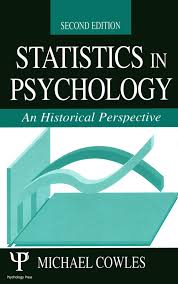Unit I : Introduction (15 hours)
Positive psychology: Definition; goals and assumptions; Relationship with health psychology, developmental psychology, clinical psychology. Activities: Personal mini experiments; Collection of life stories from magazines, websites, films etc and discussion in the class.
Unit II: Positive emotions, Well-being and Happiness (15 hours)
Positive emotions: Broaden and build theory; Cultivating positive emotions; Happiness- hedonic and Euaimonic; Well- being: negative vs positive functions; Subjective well –being: Emotional, social and psychological well-being; Model of complete mental life. Test: The positive and negative affect schedule (PANAS-X); The satisfaction with life scale (Diener et al, 1985); Practice ‘Be happy’ attitude
Unit III :Self-control, Regulation and Personal goal setting (15 hours)
The value of self-control; Personal goals and self-regulation; Personal goal and well-being; goals that create self-regulation; everyday explanations for self-control failure problems. Activity: SWOT analysis
Unit IV: Positive Cognitive States and Processes (15 hours)
Resilience: Developmental and clinical perspectives; Sources of resilience in children; Sources of resilience in adulthood and later life; Hope. Optimism- How optimism works; variation of optimism and pessimism; Resilience. Spirituality: the search for meaning(Frankl); Spirituality and well-being; Forgiveness and gratitude. Test: Mental well-being assessment scale; Test: Signature strength
Unit V :Applications of Positive Psychology (15 hours)
Positive schooling: Components; Positive coping strategies; Gainful employment Mental health: Moving toward balanced conceptualization; Lack of a developmental perspectives. Activity: An action plan for coping. Test: Brief COPE assessment scale
References:
1.Snyder, C.R. & Lopez, S.J. (2002). Handbook of positive psychology.(eds.). New York:Oxford University Press.
2.Baumgardner, S.R & Crothers, M.K.(2009). Positive Psychology.U.P: Dorling KindersleyPvt Ltd.
3.Carr, A. (2004). Positive psychology, The science of happiness and human strengths.NewYork: Routledge.
- ஆசிரியர்: SUBIKKSHA S
|
SPYA1604 |
Professional Elective II – Stress Management
|
L |
T |
P |
Credits |
Total Marks |
|
3 |
1 |
|
4 |
100 |
Objectives
1. To understand how the stressors will change the Life events or life change events.
2. To know the different Theories of Stress.
3. To highlight the different types of relaxation technique to reduce stress.
Unit-I (15 hours)
Introduction: The science and sources of stress – Stress and health – Types of stress –concept of stress – Causes of stress –Theories of stress - Response-based concept of stress - Event-based concept of stress
Unit –II (15 hours)
Stressors -Life events or life change events -Chronic stressors -Effects of stress on the body -Enhancing awareness about managing stress - The health belief model and its application to stress management: an in -depth investigation.
Unit – III (15 hours)
Relaxation: Meaning – Sleep – Sleep related disorders - Relaxation techniques: yoga and meditation –Biofeedback -Progressive muscle relaxation - Autogenic training -Visual imagery - Self-hypnosis - Humor, stress, and relaxation - Mindfulness meditation.
Unit IV (15 hours)
Coping mechanisms: Method Based on Rational Emotive Therapy-Method Based on Simplified Kundalini Yoga -Method Based on Gestalt Therapy - Systematic Desensitization - Cognitive Behavioral Therapy -Regular physical activity and exercise.
Unit –V (15 hours)
Implementing a Stress Reduction Plan: Importance of implementing a plan - Stages of change - Determining goals, objectives, and targets: goal setting: Establishing objectives - Deciding targets -Social support.
- ஆசிரியர்: Kalaivanan S
Unit I: Introduction to Statistics (15 hours)
Introduction to Statistics: the meaning of statistics - Need and importance of statistics in psychology - Prerequisites for studying statistics- Descriptive and inferential statistics - Frequency Distribution and Graphic representation of data: Histogram - Bar diagram - Pie Chart - Scatter Plot.
Unit II: Measures of Central Tendency and Variability (15 hours)
Computation of Mean, Median and Mode and their uses. Measures of variability: Computation of quartile and standard deviations - Cumulative distribution - Percentiles standard scores and their uses. Normal distribution curve: Characteristics and application - Kurtosis and Skewness.
Unit III: Parametric tests (15 hours)
Correlations: Meaning and methods – Characteristics - Pearson’s Product Moment Correlation - Point-Biserial Correlation and Phi - Biserial and Tetrachoric Correlation - Tests of Significance: t- test - Analysis of Variance (ANOVA): One way and Two way Analysis of Variance,
Unit IV: Non-parametric tests (15 hours)
Spearman’s Rank Correlation –Regression: Simple linear regression – Multiple Regression - Chi Square Test - Wilcoxon signed rank test - Mann- Whitney U test - Kruskal-Wallis (KW) test - Friedman's test
Unit V: Test construction and standardization (15 hours)
Characteristics of a good test - Steps in test construction: Item-analysis - determination of item difficulty - item discrimination - problems of item analysis - Introduction to SPSS: Meaning- Uses of SPSS in Statistics and Research.

- ஆசிரியர்: KRISHNAPRIYA B
